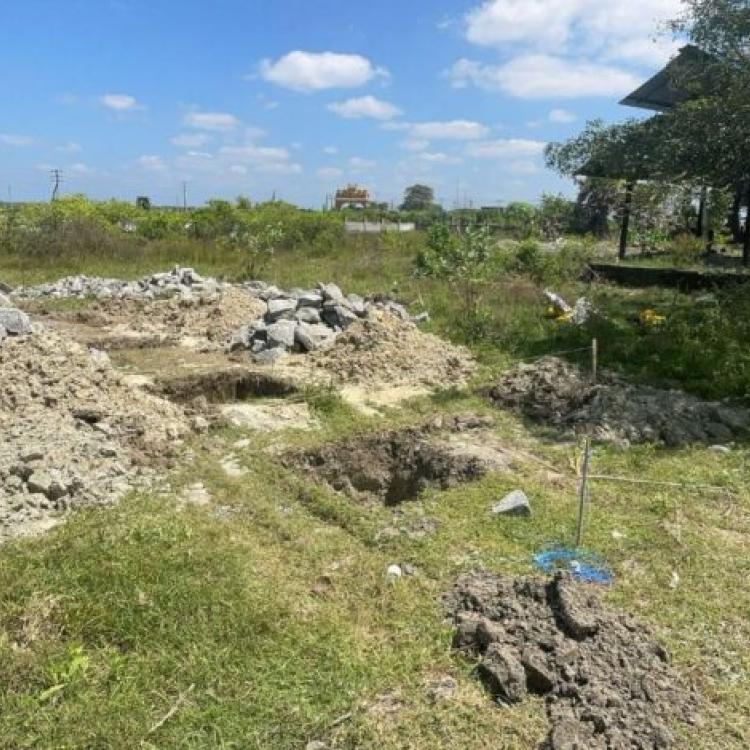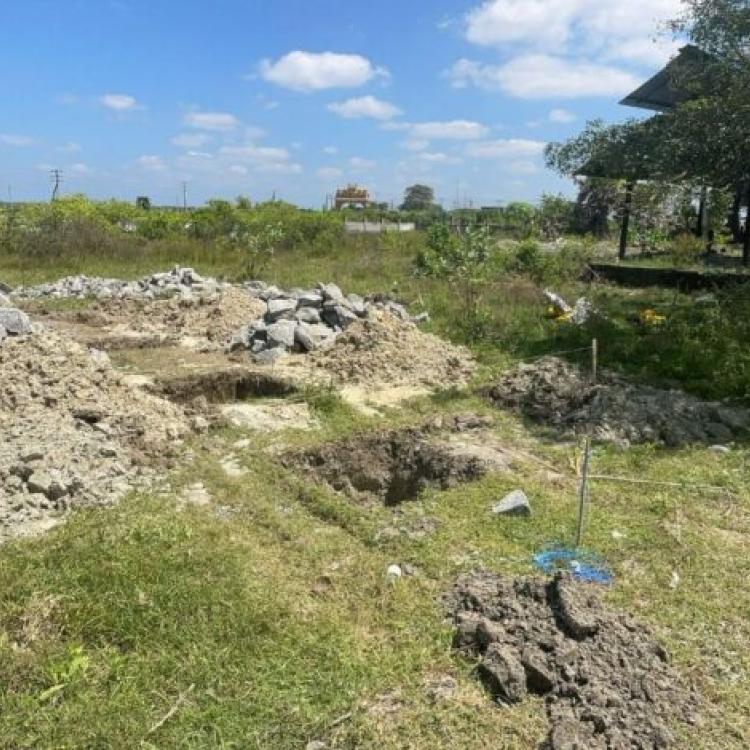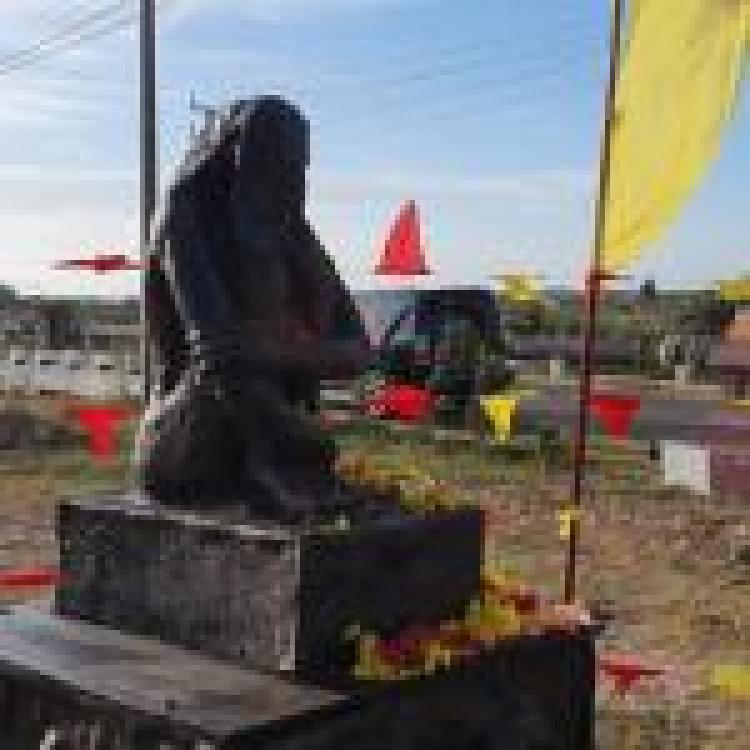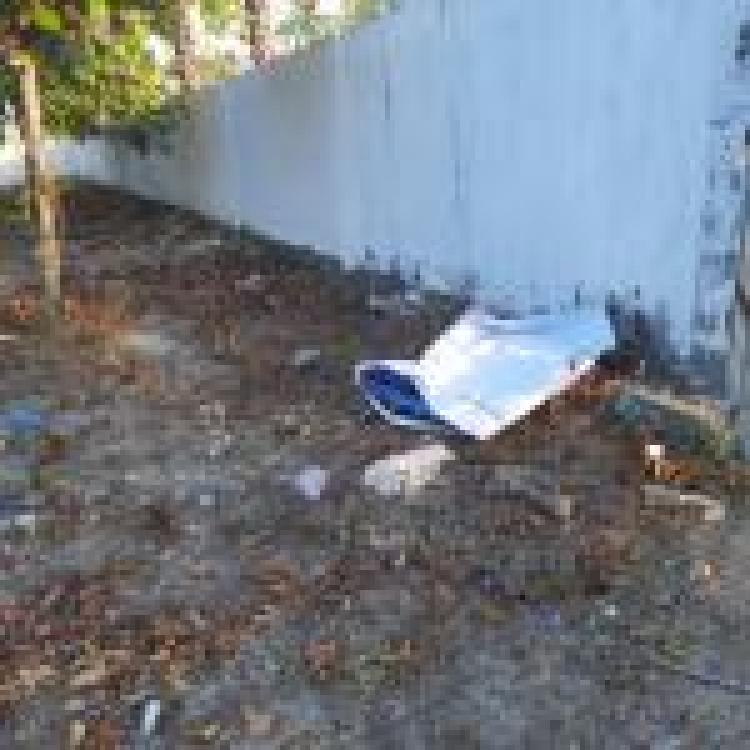.jpg)
A complete human skeleton has been unearthed during excavation works at the Sindhubath Hindu cremation grounds in Chemmani, Jaffna, intensifying suspicions that the site may be the location of a mass grave dating back to the mid-1990s, a period marked by extensive Sri Lankan military operations across the Tamil homeland.
The skeletal remains, including an intact skull and hand, were discovered at a depth of approximately three feet during an excavation carried out on Thursday last week, the second day of an investigation ordered by the Jaffna Magistrate’s Court. Notably, the remains were found scattered across different locations within the site, further fuelling fears that the area may conceal multiple bodies, potentially linked to wartime disappearances and extrajudicial killings.
The renewed excavation was prompted by a formal complaint lodged with the occupying Sri Lankan police in Jaffna, following the initial discovery of human remains by the Nallur Pradeshiya Sabha in February 2025, as part of development works at the Chemmani site.
These developments have rekindled longstanding concerns surrounding the Chemmani mass graves, widely believed to contain the remains of Tamils who were abducted, tortured, and killed during the Sri Lankan military’s reoccupation of Jaffna in 1995 and 1996. During this period, thousands of Tamils were disappeared, many after surrendering to or being detained by the military.
On 20 February, the Jaffna Magistrate carried out a preliminary judicial inspection of the site and subsequently ordered further geophysical scanning and supervised excavation to assess the presence of additional remains. The ongoing dig was to proceed under the guidance of senior archaeologist Dr Somadeva, a government-appointed expert involved in prior investigations into suspected mass graves.
However, due to persistent rainfall in the region, the third day of the excavation, scheduled for Friday, was temporarily suspended.
.jpg)
This is not the first time Chemmani has drawn attention as a possible mass grave site. In 1998, a Sri Lankan soldier publicly alleged the existence of a mass grave in Chemmani containing the bodies of Tamils who had been "disappeared" following the Sri Lankan Army's advance into Jaffna. In 1999, a mass grave containing 15 bodies was uncovered at the site—yet no one has ever been held accountable.
Over the years, numerous other suspected mass grave sites have been reported across the North-East, including Mannar, Kilinochchi, Mullaitivu, and Kalavanchikudy, with many investigations hindered by state interference, lack of political will, or abrupt termination before full forensic analysis could be completed.
The discovery of a full skeleton at Chemmani has reignited calls from families of the disappeared and Tamil civil society for an internationally monitored investigation into mass graves and war-era disappearances. These families, many of whom have protested continuously for over 3,000 days, have repeatedly rejected domestic mechanisms such as the Office on Missing Persons (OMP), calling instead for independent international accountability mechanisms.
The Chemmani site remains under court-ordered supervision, and excavation is expected to resume once weather conditions improve.




